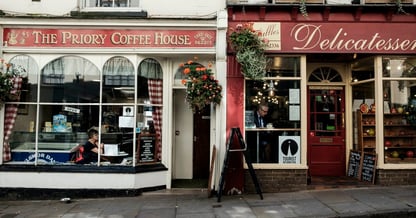
What AreThe Most Successful Business Improvement Districts?
A Business Improvement District (BID) empowers local businesses to improve the area in which they trade and fund local projects and campaigns. They’ve become...
Read more
5 minute read | 30/10/2019

The 290 Business Improvement Districts (BIDs) in the UK are tasked with using combined levy income to implement projects that will benefit the local area. It’s their responsibility to use these funds wisely and ensure local businesses, residents and visitors all enjoy the enhancements.
These best practices can help BIDs to choose, plan and implement the right projects that will lead to the most successful outcome.
BIDs exist because they’re an effective way for businesses, local authorities and the community to work together to shape the area in a positive way. The funds needed to do this are collected through a modest levy on all non-domestic ratepayers in addition to their regular business rates.
Even though this figure is modest, it’s still an extra expense that you’re asking of them. This is why it’s so crucial to have strong lines of communication open with all members. Payments are far easier to make for business owners if they’re aware of exactly how that money is being spent.
Even though a BID is in place, the local authority will still have their own plans and projects in the area. It’s best practice for BIDs to have a main point of contact with someone at the local authority who they can regularly meet with.
These meetings are an opportunity to outline what both sides are planning in the future, allowing them to offer ideas and advice where appropriate. This means there’s no overlap in spending and BIDs can ensure they have the support of the local authority with any improvements they have planned.
BIDs will face less resistance from stakeholders, businesses and the local community if they’re transparent about the work they’re carrying out. We’re not suggesting that they make every email chain public but there are simple things BIDs can do to improve visibility.
One of the most effective steps BIDs can take is to operate an active social media presence. Take a look at some examples for inspiration - here are the Twitter feeds of BIDs in Manchester, Leicester and Watford.
To make decisions that will have the most positive impact on the area, you need to fully understand the demographics of the local population. Fail to target these people effectively and you’re at risk of losing valuable income to neighbouring areas.
If people are actively looking elsewhere for shopping, eating or just a good day out, then it’s vital you take action.
Carry out research into the people that are already active within the BID and those that choose to go elsewhere. What would make their experience better? Is there a good mix of affluent and affordable options? Determine where gaps currently exist and make future decisions based on that information.
A key part of any BID is the retail offering available to shoppers. The better the shopping experience, the happier the shopper. The happier the shopper, the more money they tend to spend on average which is, of course, perfect for local businesses.
If shoppers aren’t satisfied with the current availability then you need to make sure you know. The best way to do this is to track customer opinion. There are a few different methods to try, including social media polls, incentivised surveys and something as simple as feedback buttons like you’d see in an airport.
It’s useful to know how long people stay in certain areas and what they’re doing while there. Footfall figures could be high but dwell times might show that although the volume of visitors is great, they don’t actually spend more than an hour in key spots.
Measuring dwell times tells you where people like to congregate and you can make future decisions based on this data. For example, popular areas can be redesigned so that there are vendors nearby to maximise selling potential.
Missing or closed facilities can be the negative experience that a visitor always associates with your BID. It’s vital that facilities and infrastructure are in place to ensure their visit is as positive as possible.
Take public WiFi, for example. Today’s consumers expect to be able to connect to a fast, free and reliable WiFi network wherever they are. Implementing WiFi in a BID can help to improve visitor engagement and ensure people don’t take their business elsewhere.
Customer engagement is one of the most important considerations for any BID. Knowing how to increase repeat business and ensure customers are loyal can be the difference between success and failure.
We’ve put together a free guide that offers advice and information on improving customer engagement rates. It outlines what today’s consumers expect when they interact with retailers and the steps BIDs can take to increase engagement levels, dwell times and sales. Get your free copy of the guide now by clicking on the link below.
Rebecca is the Marketing Director. She's worked for SPARK TSL since 2012. She is responsible for high level marketing strategy focusing on lead generation and aiding the vision of the business; to ensure that no patient has to pay for entertainment.
More articles by the author

A Business Improvement District (BID) empowers local businesses to improve the area in which they trade and fund local projects and campaigns. They’ve become...
Read more

Conference attendees expect to be able to connect to a free guest WiFi network when they first arrive - it’s probably the first thing they’ll do when they are...
Read more

The modern day user expects free WiFi wherever they go. On the train or in pubs, it’s difficult to go anywhere without the option of WiFi. But should the...
Read more